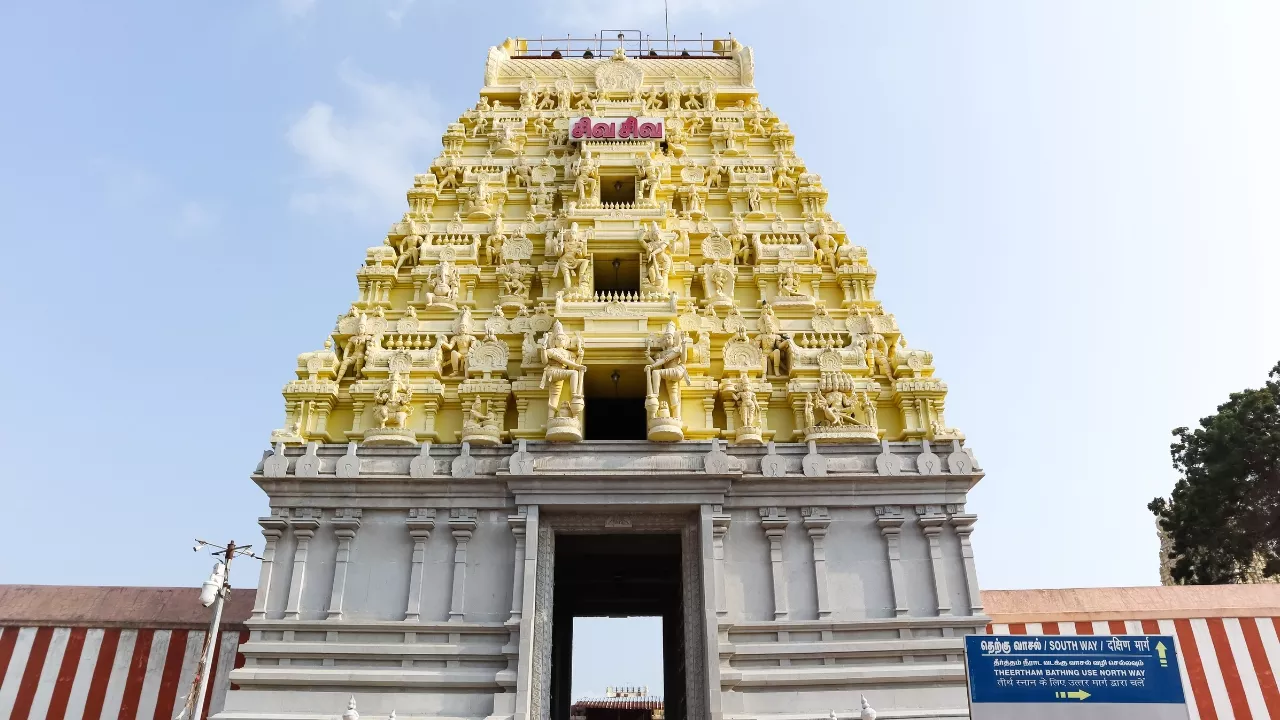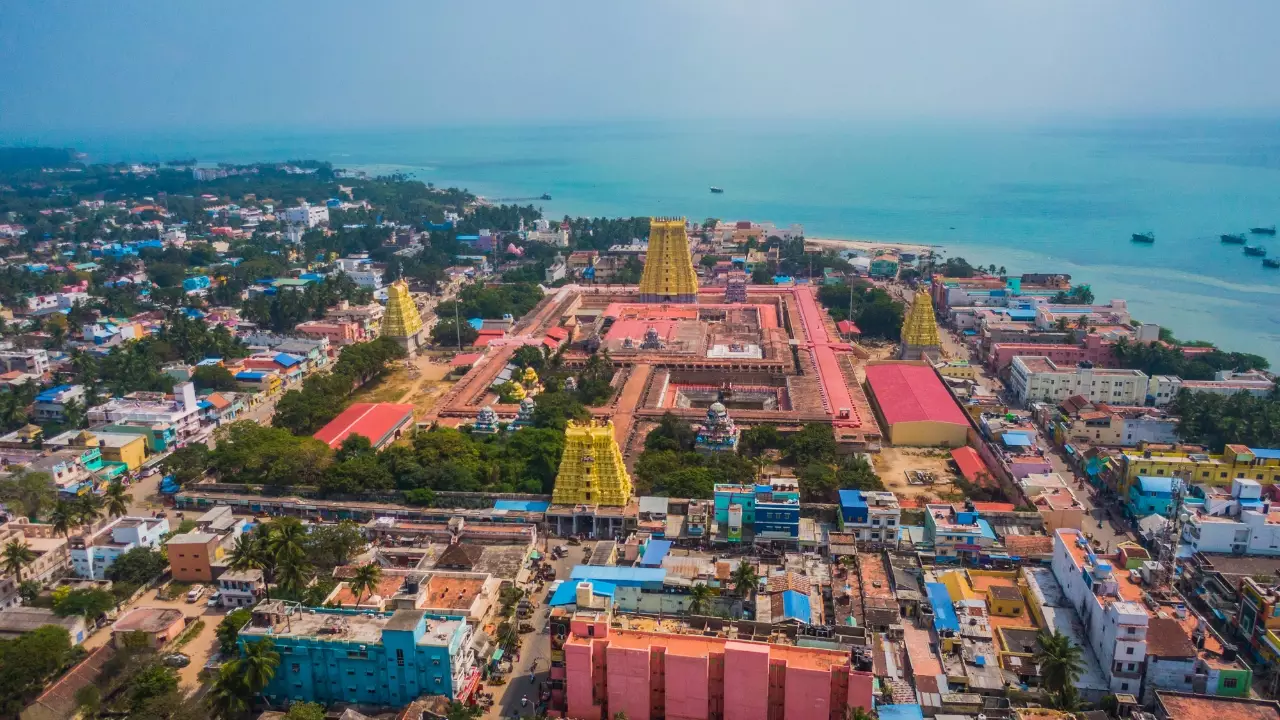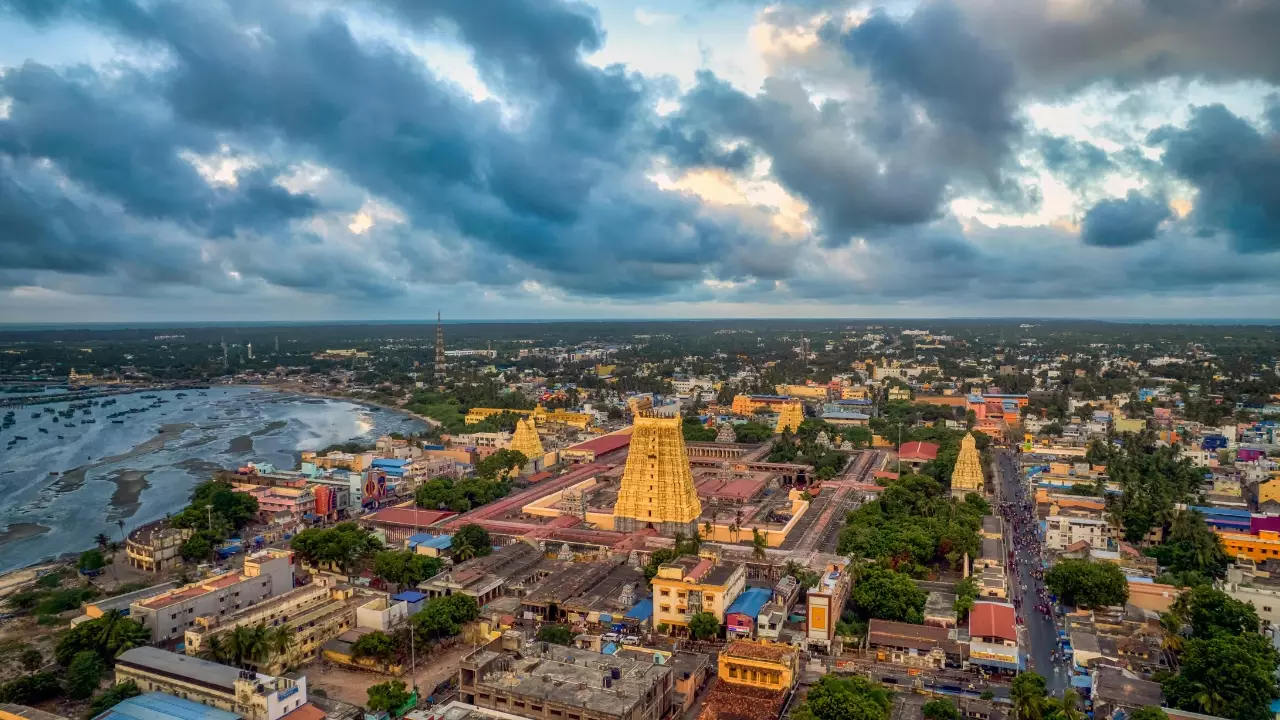Jai Shri Ram!
The Pious Prince: Lord Rama’s Unwavering Dharma- Rameshwaram Shradh Rama
Before we arrive at the shores of Rameshwaram, we must first hold the image of Lord Rama in our hearts. He was the divine incarnation of Lord Vishnu, born into the illustrious Solar Dynasty to uphold Dharma. His entire life was a testament to his unwavering commitment to his duties—as a son, a husband, a brother, and a king.
His devotion to his father, King Dasharatha, was absolute. He accepted a fourteen-year exile without a moment’s hesitation to honor his father’s word. And after his father’s passing, the scriptures tell us that Lord Rama, even in the midst of his exile and his search for Sita, meticulously performed the Shradh rites for King Dasharatha. Sages confirmed that through Rama’s offerings, Dasharatha was freed from all sins and ascended to the heavens. Lord Rama’s life itself is the greatest example of the importance of filial piety and ancestral reverence.

Rameshwaram: A Land Forged by Devotion and Redemption
Now, let us journey to the sacred island of Rameshwaram. Its profound sanctity is forged from two monumental events in Lord Rama’s life.
The Setu: The Bridge of Faith
It was from these shores that Lord Rama, with his army of Vanaras, built the magnificent Setu—the bridge to Lanka—to rescue his beloved Sita. This bridge was not just a feat of engineering; it was a testament to the power of faith, devotion, and the chanting of the divine name. The very act of its construction charged this entire region with immense spiritual energy.
The Ramanathaswamy Lingam: The Act of Redemption
The most crucial story that connects Rameshwaram, Shradh, and Lord Rama is the installation of the Shiva Lingam. After the great war, Rama was victorious, and Dharma was restored. However, in the course of the war, he had to slay the great king of Lanka, Ravana.
Now, Ravana, despite his adharmic actions, was a Brahmin by birth, a great scholar, and a devotee of Lord Shiva. Thus, by slaying him, Lord Rama incurred the gravest of all sins: Brahma-hatya, the sin of killing a Brahmin. To expiate this sin, the sages advised Lord Rama to perform a penance and worship Lord Shiva.
On the shores of this island, Lord Rama installed a Shiva Lingam and worshipped it with utmost devotion. Lord Shiva, pleased with his devotee’s humility and piety, appeared and absolved him of the sin. This Lingam became known as Ramanathaswamy—”The Lord of Rama”—and the place was named Rameshwaram—”The place of the Lord of Rama.”
This act of redemption by Lord Rama himself transformed Rameshwaram into a supreme Tirtha for the absolution of sins. If this sacred soil could cleanse the Lord himself of the greatest sin, imagine its power to cleanse us and our ancestors of our accumulated karmas.
The Ultimate Synergy: Performing Shradh in the Land of Rama’s Penance

When you perform ancestral rites at Rameshwaram, you are tapping into this powerful legacy of devotion and redemption. It is a multi-layered spiritual act.
An Offering at a Tirtha of Absolution
The primary goal of Shradh is to help our ancestors find peace and liberate them from any karmic burdens or suffering states they may be in. By performing Shradh at Rameshwaram, you are making your offerings in a place renowned for its power to dissolve even the gravest of sins. The very energy of the Tirtha aids in the purification and upliftment of the ancestral souls.
Walking in the Footsteps of the Lord
Lord Rama himself set the precedent for ancestral reverence. By performing Shradh at a place so intimately connected with his life, you are aligning your personal Dharma with the perfect Dharma of the Lord. You are not just following a ritual; you are walking in the very footsteps of Sri Rama, making him a divine witness and guide for your ancestral offerings.
A Confluence of Divine Grace: Shiva and Vishnu
Rameshwaram is one of the rare and powerful Tirthas where the energies of both Lord Vishnu (in the form of his incarnation, Rama) and Lord Shiva (in the form of the Ramanathaswamy Jyotirlinga) are equally present and potent. When you perform Shradh here, you are invoking the combined grace of both the Preserver and the Dissolver, a spiritual force of unparalleled power, to bless and liberate your ancestors.
The Sacred Geography: The Rituals and Procedures
The Rameshwaram Shradh Rama pilgrimage involves a series of sacred acts at specific locations, each amplifying the power of your offering.
Agniteertham: The Sacred Sea of Purification
The first and foremost step for any pilgrim is to take a holy dip in the sea at the ghat known as Agniteertham. It is a calm and serene part of the ocean, directly in front of the main temple entrance. A bath in these sacred waters is believed to wash away one’s sins and purify the body and mind, making one fit to perform the ancestral rites.
Shradh on the Seashore
It is on the shores of Agniteertham that the Shradh and Pind Daan rituals are traditionally performed. Under the guidance of the local priests, you will make your Sankalpa and offer Pindas and Tarpan for your ancestors. Imagine this scene: the vast, eternal ocean before you, the magnificent temple behind you, and you, a humble descendant, making an offering of love, connecting the past with the eternal. The sound of the waves mingles with the chanting of the mantras, creating a profoundly moving experience. The Pindas, after the ritual, are respectfully immersed into the sea.
The 22 Holy Wells (Theerthams)
After the Shradh on the seashore, the pilgrim’s journey of purification continues inside the Ramanathaswamy temple. There are 22 sacred wells, or Theerthams, within the temple corridors. It is a sacred tradition to bathe in the waters of all 22 of these Theerthams. Each well is said to have a unique spiritual property, and bathing in them sequentially is believed to bestow immense blessings and complete the process of purification.
Darshan of Ramanathaswamy

The pilgrimage culminates with the darshan (sacred viewing) of the Ramanathaswamy Jyotirlinga, the very Lingam consecrated by Lord Rama. This final act is one of surrender, placing the fruits of all your rituals at the feet of the Lord, seeking his final blessing for the liberation of your ancestors.
A Final Counsel: The Call of the Sacred Bridge
The connection between Rameshwaram, Shradh, and Lord Rama is deep, powerful, and alive. To perform ancestral rites here is to do more than just follow a tradition.
- It is to honor your ancestors in a place sanctified by the greatest upholder of Dharma.
- It is to seek purification for them in a Tirtha renowned for its power to absolve all sins.
- It is to invoke the combined grace of Shiva and Vishnu for their ultimate liberation.
For those who are unable to make the physical journey to this sacred island, remember that Lord Rama resides in the heart of his devotees. You can perform the Shradh at home, and in your Sankalpa, you can mentally transport yourself to the shores of Agniteertham, with the Ramanathaswamy temple as your witness. A sincere mental pilgrimage is also a true pilgrimage. Furthermore, in our modern times, reputable organizations like pitrupaksha.org can facilitate the performance of these sacred rites at Rameshwaram on your behalf, ensuring that the blessings of this holy Tirtha can reach your ancestors, no matter where you are.
The legacy of Lord Rama is a legacy of love, duty, and unwavering faith. By performing Shradh at Rameshwaram, you become a part of that divine legacy, ensuring that the light of your devotion illuminates the path for your ancestors, guiding them to the supreme abode of peace.
Jai Shri Ram!
